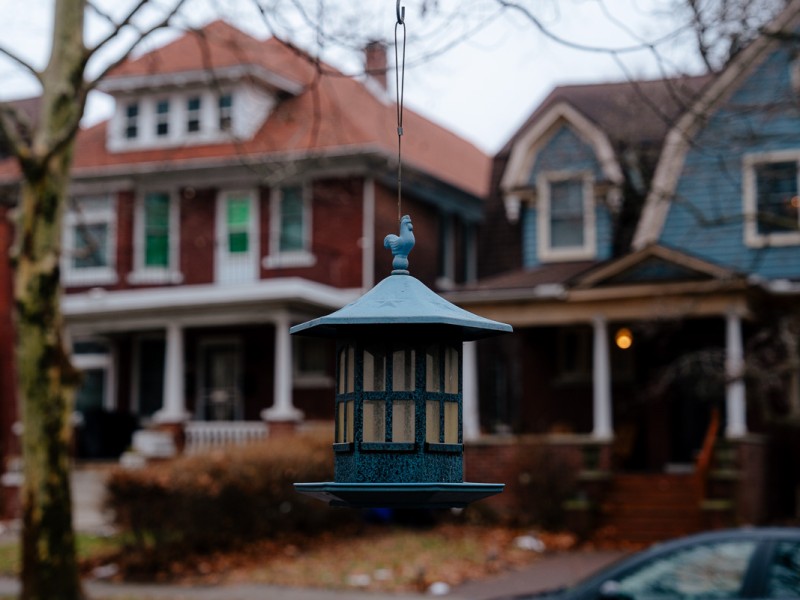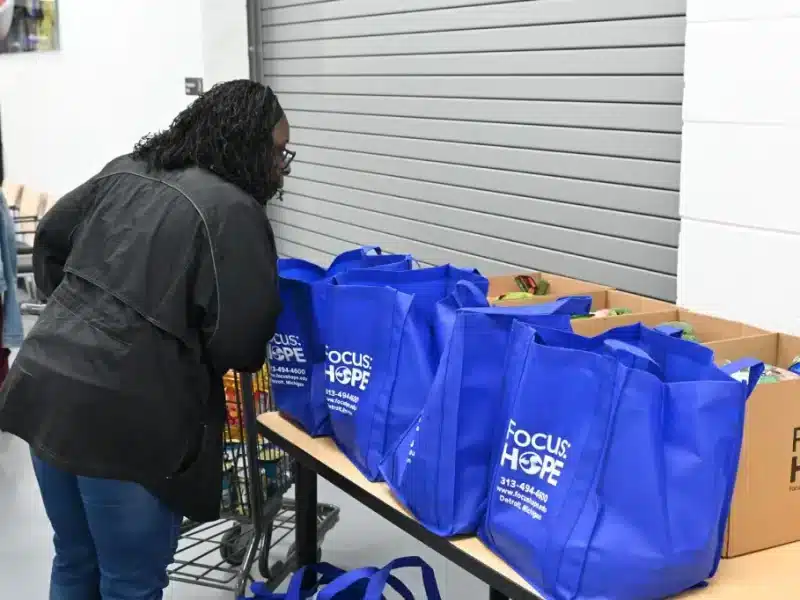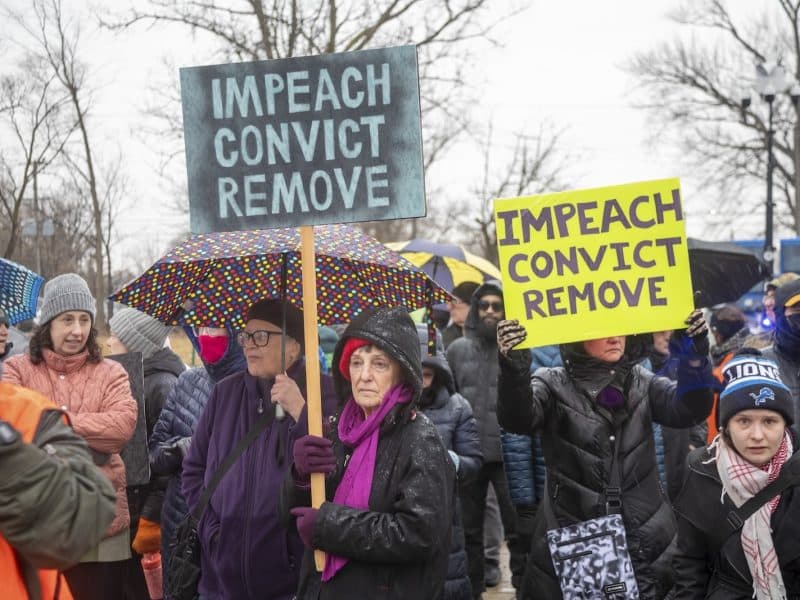Uniting Southwest Detroit
Kathy Wendler loves the diversity of Southwest Detroit, where she has led the Southwest Detroit Business Association for more than two decades. Her job involves building a lot of bridges, between neighborhoods and businesses, Hispanics and non-Hispancis and City Hall and Southwest Detroit. In her words, ‘It’s about connecting people and assets and energy.’
It takes quite a romantic to love an “aging industrial complex.” But Kathy Wendler loves the vibrant, diverse community that has grown out of the once industrialized Southwest Detroit.
 The zeal with which she has helped to rebuild the business and community infrastructure of the area, as president of the Southwest Detroit Business Association, is fueled by a passion for learning and the vitality that comes from her high school years at the racially and culturally-diverse Cass Tech in the late 1950s. A product of the predominantly white East Side of Detroit, she experienced a cultural awakening at Cass.
The zeal with which she has helped to rebuild the business and community infrastructure of the area, as president of the Southwest Detroit Business Association, is fueled by a passion for learning and the vitality that comes from her high school years at the racially and culturally-diverse Cass Tech in the late 1950s. A product of the predominantly white East Side of Detroit, she experienced a cultural awakening at Cass.
“Going to Cass let me know how much richer life could be with cultural diversity and racial diversity,” she says. “Cass Tech was a microcosm of what cities could be; the excitement of a city, the excitement of other cultures and perspectives, being challenged on what I believed. … It was just a very cool place. I see that in Southwest Detroit.”
Bringing together businesses, community
Wendler’s interest in urban planning started while she was studying historic preservation at Columbia University. She saw a natural affinity between the adaptive reuse of historic structures and urban redevelopment.
In 1981, while working for the Central Business District Association in Detroit, she was recruited to become the first president of what once was a “sleepy” business association in Southwest Detroit.
Tony Martinez, owner of Disenos Ornamental Iron in Southwest Detroit, recalls the early days when Wendler established an office in his building. “She took it (the association) and made it flourish. The Southwest Detroit Business Association only (represented) a few businesses in the Springwells/Lawndale area. She expanded it to all businesses along Vernor.”
Wendler now leads a staff of nine full-time and one part-time employees, with a $2.2 million annual budget.
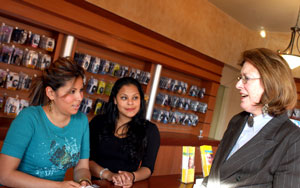 A SWDBA board member for 10 years, Martinez says that Wendler gained the trust of the largely Hispanic business owners by simply engaging them one on one, one by one. “She’s a person who listens to us,” he says. “(The association) has prospered because she was the English voice for the Hispanic community. She was the face in the city to help us with many, many issues. She was the voice that told the city, ‘There is a Southwest Detroit. It is part of the city. Don’t just abandon it because it’s Hispanic.’”
A SWDBA board member for 10 years, Martinez says that Wendler gained the trust of the largely Hispanic business owners by simply engaging them one on one, one by one. “She’s a person who listens to us,” he says. “(The association) has prospered because she was the English voice for the Hispanic community. She was the face in the city to help us with many, many issues. She was the voice that told the city, ‘There is a Southwest Detroit. It is part of the city. Don’t just abandon it because it’s Hispanic.’”
The inter-relationship between business and community is significant, she says, noting that the association slogan is “Community Builds Business, Business Builds Community.” Housing and business development, along with environmental advocacy, go hand-in hand in Southwest Detroit.
“As a business group, we felt this would be a lot less interesting commercial district if it’s in the middle of a bunch of parking lots.”
The association established an administrative and financial infrastructure, which fostered the area’s revival, Martinez says. “It was very difficult 25 years ago. When the car companies started leaving, it was even worse. … This organization, little by little, every year kept doing something – maybe doing sidewalks when there wasn’t enough money to do a huge project.”
Wendler has overseen more than $17 million in business and non-profit redevelopment in Southwest Detroit, with $4.4 million of commercial real estate currently under construction.
Reinvention
Tenacity is the quality Wendler ascribes to her lengthy tenure in Southwest Detroit. Next year she will celebrate her 25th anniversary with the association. Symbolic of the long-term nature of her work is a shopping center planned for the intersection of Vernor and Livernois – which will link the commercial businesses on the east and west sections of Vernor. She’s been working on the project for 20 years. “We might actually get it done within the next five,” she says.
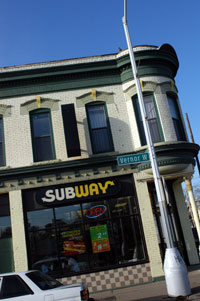 Using the Main Street model of the National Trust for Historic Preservation, she employs a pragmatic form of historic preservation, leveraging private investment into existing and new buildings – “taking what is our competitive advantage, our walk-able community, our neighborhood feel and reinforcing the historic character and quality of the neighborhood.”
Using the Main Street model of the National Trust for Historic Preservation, she employs a pragmatic form of historic preservation, leveraging private investment into existing and new buildings – “taking what is our competitive advantage, our walk-able community, our neighborhood feel and reinforcing the historic character and quality of the neighborhood.”
The association’s offices are in a once-vacant brick storefront from the early 20th century. The interior offers a striking accent of creatively placed industrial scrap metal against the aged wood, nurturing an environment of new ideas.
The American Dream, she says, remains vital in the wake of the Industrial Age, primarily in the entrepreneurial spirit of the people. The Cadillac Fleetwood assembly plant and the other factories may be gone, but “we have learned how to reinvent ourselves,” she says. “The American Dream now is opening a restaurant in Southwest Detroit and growing it.” This, she says, is largely the result of the immigrant experience, particularly the Hispanic experience, which has defined the area.
Yet, it’s that age old “ethic of pulling yourself up by the bootstraps and grab for whatever it is that’s your dream,” she says. “I think things happen where people will them to happen. People have been willing things to happen in neighborhoods. I’ve also recently seen the end product of willing things to happen downtown as well. And I really like it.
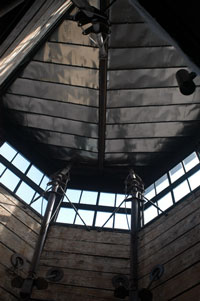 “There’s something about the dynamism of a place that became the industrial engine of the world at a point in time. It’s still here, in part of our bone marrow. It’s exciting. I don’t know why, it’s just fun. It’s controversial. It’s stimulating.”
“There’s something about the dynamism of a place that became the industrial engine of the world at a point in time. It’s still here, in part of our bone marrow. It’s exciting. I don’t know why, it’s just fun. It’s controversial. It’s stimulating.”
She speaks as though she were fresh on the job, nearly ebullient as she emphasizes, “It’s exciting!”
“It think it’s just about tenacity. It’s about problem-solving. It’s about connecting people and assets and energy… remembering what people can contribute, constantly reminding yourself that this one can do this and this one can do that and if this one and that one came together we could have something really exciting here.”
A longtime member of the Detroit Planning Commission, Wendler impresses her colleagues with the extent of her after-hours contributions to city life. “I’ve never participated in anything in which I didn’t get more out of it than I gave,” she says. “As long as I was learning, it was exciting. The energy comes from the learning.
“Every time I’m at that planning commission table, people from the neighborhood come and talk about their concerns. They always hone in on the issues. It’s humbling. It’s wonderful. … I get re-energized by residents coming to the table and saying how much they care about where they live and their house and their neighborhood. It’s the opposite of apathy.”
Wendler has remained in Detroit, she says, because family and opportunity are here. But there’s “something about the aging industrial complex” and the working-class ethic, and the challenge of community organizing and the “dream.”
“It don’t know what it is, but it’s my version of the American Dream…being able to experience the richness of what a city can be and ensure that we appreciate what is uniquely Detroit. I think Southwest Detroit comes as close as you can get.”
http://www.southwestdetroit.com/
